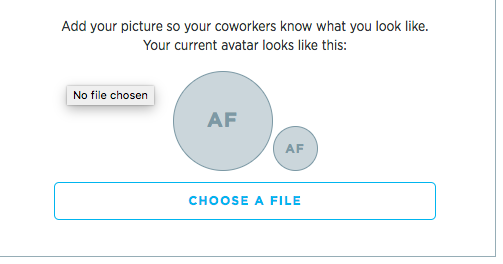Given the increase in the popularity of cooking and food shows over the past several years, it is probably not surprising that culinary schools all over the country have seen their enrollment rates swell. While some people assume that getting a culinary degree is a matter of taking a few courses, there are actual degrees that can be earned in the discipline, and the highest degree of these is the master's degree.
What Is the Highest Degree in Culinary Arts?
Most people think of a master's degree as an academic degree, but there are various professional fields that are decidedly nonacademic in which students can earn a master's degree. While people often wonder if there is such a thing as a culinary Ph.D., the fact is that the master's degree is the highest attainable degree in the field of culinary arts.
The culinary arts educational spectrum is one that varies greatly depending on the goal of the student. While almost every student enters culinary school with an interest in practicing the culinary arts either in a restaurant kitchen, as a private chef or in a catering capacity, the level of commitment to learning the craft depends on many factors. The most critical thing to consider when you are examining the culinary school options is the kind of career you want to have.
For students who are hoping to learn the essentials of cooking through lectures and hands-on cooking scenarios, the associate degree is most likely the correct choice. Students who want to work in the hospitality industry in a large capacity, such as a restaurant owner or hotel manager, may consider the bachelor's degree in culinary arts. The master's degree in culinary arts is the most advanced degree and is mostly for people who are interested in working in the food and beverage industry outside of the kitchen in a corporate setting.
Associate Degree Programs
Depending on the type of degree you are pursuing and the kind of career you are hoping to have, the things you learn in culinary school will vary. Students who are coming in fresh with no prior culinary study will likely begin with an associate degree in culinary arts. Associate degree programs teach students the basics of cooking, knife skills, various kitchen techniques and in many cases, the history behind the methods. Students will spend much of their time doing hands-on cooking work, listening to lectures and practicing their skills.
Bachelor's Degree Programs
At the bachelor's degree level, things are more intensive. Students who are hoping to get a bachelor's degree in the culinary arts are likely to want to begin careers in the hospitality management industry. This may mean managing a restaurant group, working with food and beverage programs or working on the corporate side of a food and beverage company. Students will learn not only cooking and kitchen skills but also business principles, budgeting and cost analysis and a slew of other professional topics that will help them in careers outside of the kitchen.
Master's Degree Programs
Students who are interested in obtaining a master's degree have a more comprehensive educational program to get through. The master's is an additional two-year program after the bachelor's and is generally attained by students who already have a bachelor's in culinary studies or hospitality. Master's degree candidates will find themselves training with skilled and renowned chefs, perfecting their skills with certain cuisines and techniques and getting a broader and deeper understanding of the business of the food industry.
Why Go to Culinary School?
While it may seem self-explanatory, there are many people, including food service veterans and experts, who would argue that culinary school is not necessary. Many of the most famous chefs in the world did not attend culinary school but rather learned to cook by watching and working in the kitchens of various restaurants. This is one way to do it. There is no substitute for on-the-job training. The pressure of working in a restaurant kitchen is very different from the educational atmosphere found at a culinary school, and students will need to experience it.
However, there are many compelling arguments both for and against culinary school. Those who are for it cite the training, the time to ask questions, the time to study and make mistakes and the time to truly perfect the basic skills that all cooks and chefs will take into the kitchen with them and use throughout their careers. Additionally, there is the access students have to chefs, to culinary libraries and to a kitchen where they can practice without the stress of a restaurant. Students in culinary school learn the basics in the best possible way, untampered by the personal style of a particular chef or the shortcuts around which many restaurant kitchens are based.
Costs of Culinary School
Culinary school is extremely costly. For those who are pursuing it after having completed a traditional four-year bachelor's degree at a university, it may be nearly as expensive as their undergraduate education, and that's only for an associate degree. For an additional bachelor's degree, a student may find himself shelling out twice as much money as his peers. This difficulty is compounded by the fact that most restaurant cooks just out of culinary school only make an hourly wage with no benefits, and these wages are rarely enough to support an individual, let alone one with a family.
Do All Chefs Need a Culinary Arts Degree?
Graduating from culinary school is not a requirement for a chef or any cook. There are many benefits, however, to selecting the culinary school route, many that have to do with networking, job placement and broad exposure to practicing professionals in the field. However, it is possible that a cook could get a job in the prep kitchen at a restaurant and slowly rise up through the ranks of the kitchen, learning all the different stations and eventually becoming a sous chef or an executive chef.
The benefit to beginning in a kitchen is the hands-on training in a fast-paced competitive environment that forces cooks to pick up skills quickly and learn their way around a kitchen with little room for error. An additional benefit is that cooks who begin their careers in a kitchen often find themselves learning every single bit of information about every single station in the kitchen, including prepping. Students who come out of culinary school and are assigned to the line without having done prep work run the risk of limiting their own knowledge and starting their careers without the valuable background that comes with beginning in a kitchen.
Regardless of whether or not a cook attends culinary school, one thing is for sure: She will have a true passion and interest in the world of food and cooking. For cooks who start in the kitchen without pursuing a culinary degree, they will need to be sure to spend time on their own studying, practicing and enhancing their skills so they can better perform in the restaurant kitchen and demonstrate mastery. Students who are in culinary school may need to take on part-time work in a restaurant kitchen in order to best understand what their career will be like after graduation.
How Long Is Culinary School?
The length of culinary school depends on the kind of degree that is desired and the place where you choose to go to school. Some culinary associate degrees, which are the most common degrees earned by students who are hoping to begin work in restaurant kitchens, are two-year programs. These are intensive programs that take place mostly in simulated kitchens where students learn hands on as opposed to in a lecture format.
Students pursuing a bachelor's degree in culinary education can expect to spend four years in the pursuit. In addition to practical hands-on cooking, most bachelor's degrees in culinary arts also include business courses, kitchen management courses and budgeting and costing. Some of them include history and food writing as well as the history of table service and the history of important chefs, cooks and other contributors to the field.
A master's in culinary arts can take an additional two years, but in almost every case this degree is earned after the student has completed a bachelor's in the same discipline, although that is not absolutely required. Some people who are pursuing a master's in culinary education may have pursued a more traditional bachelor's degree and simply took a certain amount of prerequisite classes in order to qualify for a culinary master's program.
How Much Does a Culinary Arts Graduate Make?
The starting salary for a culinary arts graduate varies tremendously. Students who are leaving culinary school with an associate degree and beginning to enter the workforce may make as little as $10 an hour doing prep work. Students who have a specialized degree as a pastry chef or a sous chef may be able to command a higher salary, but it is highly dependent on the type of restaurant or bakery they are joining.
Another significant factor is the city in which the culinary school graduate lives. In big cities, the wage may be slightly higher for entry-level positions, but the cost of living is almost always significantly higher as well. Big cities can be a great place to get into the business, particularly for cooks who are hoping to advance quickly in their career, but the tremendous expense in the cost of living and the low wages may make it prohibitive, especially for chefs or cooks who have exorbitant student loans to pay off.
What Is the Order of Culinary Arts Degrees?
Culinary arts degrees begin with the associate degree, which can be earned after approximately two years. For most chef hopefuls, this is the degree they will get before embarking on their careers in the culinary field. After a time, they may choose to come back to school or take additional classes to earn various certifications, but they can make their way in the hospitality, beverage and food industries with only their associate degree.
The bachelor's degree is the next degree in terms of commitment and scope that someone in the culinary arts field might pursue, although it is rare that someone who has an associate degree in culinary arts would return to school for a bachelor's since some of the curricula is redundant.
Finally, the master's degree in culinary arts is the last degree that is typically earned by someone who is pursuing a career in the food and beverage industry. It encompasses more than any of the other two degrees, and having attained it, the chef is most likely to be not only an expert in the cooking techniques and skills required of various culinary disciplines but also an expert in the business side of the industry.
Related Articles
References
Writer Bio
Ashley Friedman is a freelance writer with experience writing about education for a variety of organizations and educational institutions as well as online media sites. She has written for Pearson Education, The University of Miami, The New York City Teaching Fellows, New Visions for Public Schools, and a number of independent secondary schools. She lives in Los Angeles.











